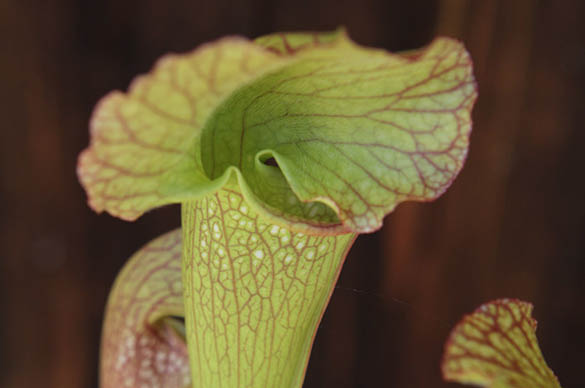Why do Carnivorous Plants go dormant?
As temperatures drop, daylight diminishes, and insects retreat underground, the growing season of carnivorous plants reaches its end. Most carnivorous plants enter dormancy in the autumn. During this time, they stop producing new traps, and their existing ones slowly die. This is a normal and natural process, so don’t be concerned if your Venus Flytrap’s traps turn black or your Trumpet Pitcher’s leaves begin to brown. It’s part of their life cycle. With less sunlight and cooler weather in autumn and winter, insects become scarce, leaving little to no food for carnivorous plants. Some species undergo a deep dormancy. When temperatures rise in spring, the plants will naturally begin to grow again.
Carnivorous Plants in Your Garden Centre
Our carnivorous plants are cultivated in a controlled environment and shipped as healthy, thriving specimens year-round. However, with the arrival of autumn, these plants will naturally enter a dormancy phase due to reduced light and warmth. As long as the temperature in your indoor garden center or plant shop provides ample light with a temperature above 15 C, the plants will thrive. However, we recommend to advice your customers to keep the plants in a cool place (5 to 10 degrees) and allow the plant it’s dormancy period.
How long does dormancy last for Carnivorous Plants?
Dormancy usually begins as autumn sets in, when the sun is less bright and temperatures drop, often around late September or early October. This period typically ends in the spring, around April, when the weather becomes warmer and sunnier.
Which Carnivorous Plants Enter Dormancy?
Due to reduced sunlight and colder temperatures, carnivorous plants react differently. Species like Venus Flytrap, Trumpet Pitcher Plant, and some Sundews (e.g., capensis, aliciae, nidiformis) undergo deep dormancy, ceasing trap production, and the old traps will die off. While the plant may look dead, it’s normal, and in spring, it will sprout new traps. Tropical carnivorous plants, such as Nepenthes, don’t experience as intense a dormancy. During winter, they produce few new traps but still look vibrant. Nepenthes stops producing new cups, but its leaves remain lush and green.
Winter Care for Carnivorous Plants
Trumpet Pitcher (Sarracenia) and Venus Flytrap (Dionaea muscipula):
Both plants undergo a strict dormancy. If kept outside, nature will handle the process, though you should ensure the soil remains moist during dry spells. If these plants are kept indoors year-round, avoid exposing them to sudden outdoor temperature changes in autumn. Instead, move them to a cooler room like a garage and ensure they receive light through a window. Keep the plant in a shallow layer of water, though less than in summer. Traps will turn brown or black during dormancy, and these can be pruned. By the end of this period, most traps will have died, but this is normal.
– Light: Ensure a light source, as the plant still needs light during winter.
– Water: The plant can remain standing in a small amount of water.
– Feeding: Do not feed during dormancy.
– Other: Remove dead traps to prevent mold.
Sundew (Drosera):
Tropical Sundews like Drosera capensis, Drosera aliciae, and Drosera nidiformis remain somewhat active in winter. While they continue flowering, their growth slows. You don’t need to move them to a colder area—just leave them near a window. Remove any dead stems to prevent mold.
– Light: Keep the plant in a bright spot by the window.
– Water: The plant should still stand in water.
– Feeding: Avoid feeding during dormancy.
– Other: Remove dead traps and stems.
Butterwort (Pinguicula):
Most Pinguicula species are tropical and continue to flower during winter, though their growth slows. There is no need to relocate them during winter, and they can stay by a window.
-Light: Place the plant where it gets light.
– Water: Water once or twice a week, ensuring the soil doesn’t dry out.
– Feeding: Do not feed during dormancy.
– Other: Remove any dead leaves.
Monkey Cup Plant (Nepenthes):
Nepenthes, being a tropical plant, doesn’t enter strict dormancy. While the leaves remain green, the cups will dry out and turn brown. At this point, the plant’s growth slows, and it stops producing new cups. Trim the old cups to save the plant’s energy.
– Light: A mix of direct and indirect light throughout the day.
– Water: Spray the plant with water daily.
– Feeding: Don’t feed during the dormant period.
– Other: Remove dead traps to keep the plant healthy.

